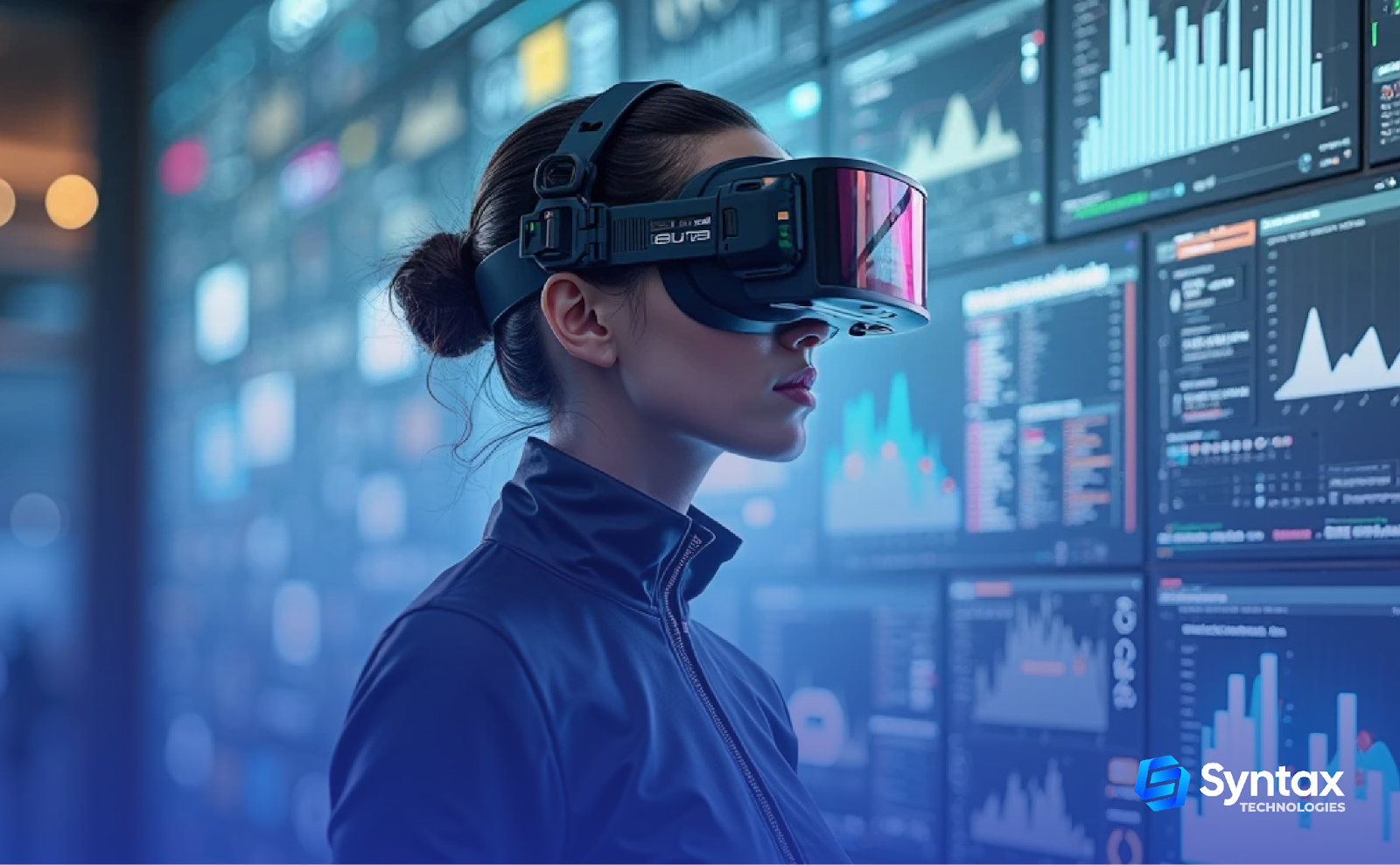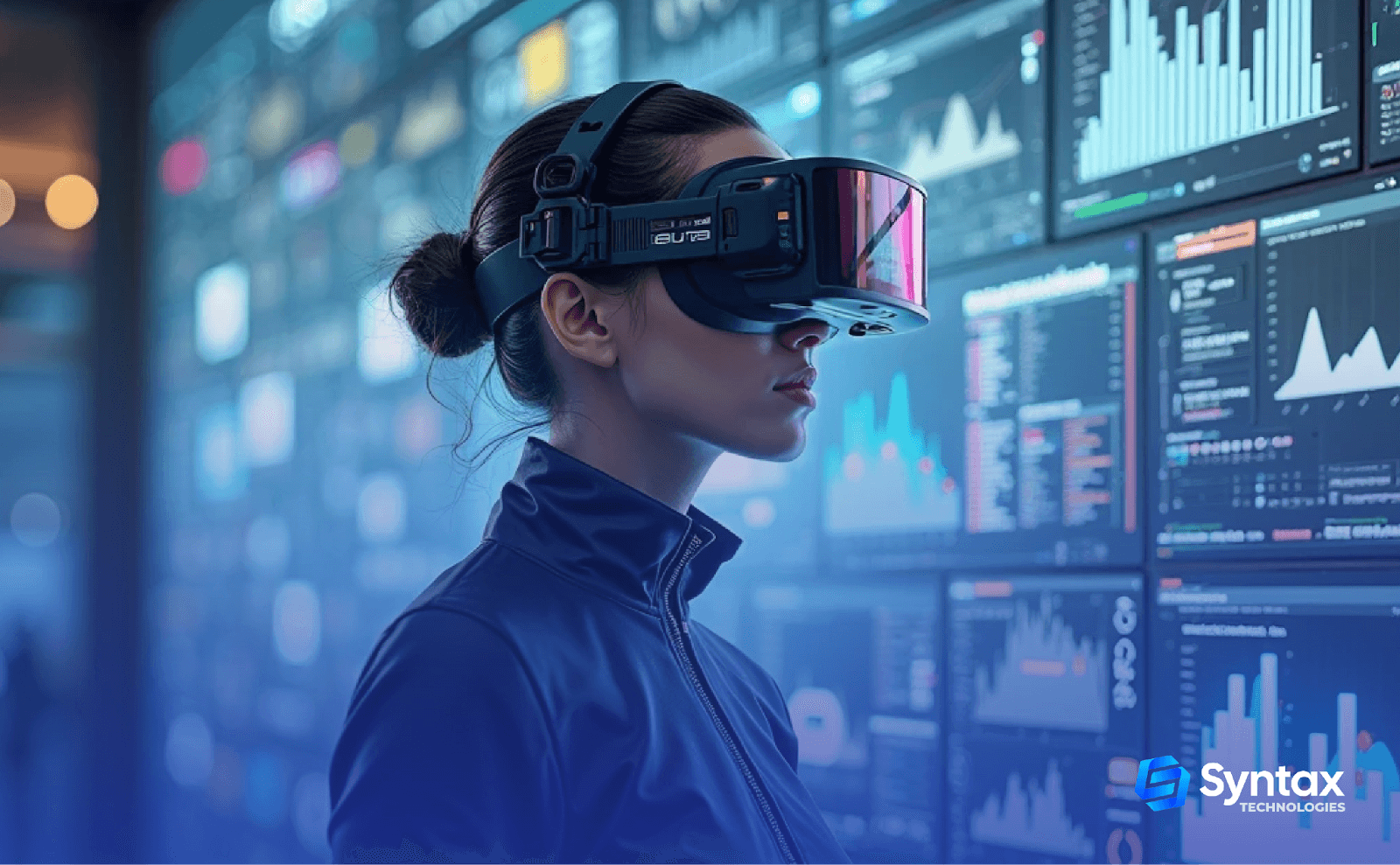Have you ever wondered how the Metaverse is able to feel so personal and interactive, almost as if it understands your preferences? Well, it’s not magic—it’s Data Analytics. From virtual shopping malls to immersive gaming experiences, the Metaverse thrives on the data generated by every action, interaction, and transaction.

In this blog, we’ll dive into how Data Analytics in Metaverse is transforming this virtual world, shaping user experiences, and driving real-world business opportunities. Whether you’re exploring virtual fashion, buying property in the Snoop Verse, or interacting with AI avatars, data is what makes it all happen seamlessly. Let’s explore how this behind-the-scenes technology is not only powering the Metaverse today, but also paving the way for its future.
What is the Metaverse?
The Metaverse is essentially a virtual world made up of immersive digital spaces. You can think of it like stepping into a video game where the possibilities are endless. Imagine hanging out in a virtual city, attending concerts, shopping for digital clothes, or even buying virtual property—basically, everything you do online, but in a more interactive, 3D way.
What is important to remember is that this world doesn’t run on just some high end graphics. The Metaverse thrives on Data. All the interactions, movements, purchases, and activities you do in the Metaverse generate data that makes everything work. And this is where Data Analytics plays a huge role.
Big Data and Metaverse
Where does all the data in the Metaverse come from? Well, almost everything you do in the Metaverse creates data. Whether you’re chatting with someone, attending a virtual event, or even just walking around in a virtual space, it’s all being tracked.
For example, when a user buys virtual real estate in Snoop Verse, the Metaverse world created by rapper Snoop Dogg, the system collects data on the transaction, the location of the property, and the user’s preferences. This data not only makes the world feel alive but also helps shape the experience for future interactions.
Here’s a breakdown of how data is collected in the Metaverse:
- User Interactions: Every action you take—chatting, purchasing, exploring—is tracked and analyzed to make sure the Metaverse adapts to you.
- Behavioral Data: How you move, what you buy, and even how long you stay in certain places are important data points that help personalize your experience.
- Environmental Data: Changes in the virtual environment (like the weather, or the virtual land being developed) are monitored to keep things fresh and engaging.
How is Data Powering the Metaverse?
Let’s talk about how Data Analytics in Metaverse is really making this whole thing come to life. Without it, the Metaverse would just be a static, boring space. But with data, the Metaverse is dynamic and tailored to each user’s preferences.
- Personalized Experiences: Brands are already using data to personalize your Metaverse experience. For instance, Nike has its own virtual world on Roblox, called Nike Land, where users can shop for virtual shoes and apparel. Nike tracks data to suggest items based on your virtual shopping behavior, just like how Amazon recommends products based on what you’ve searched for before.
- Improved User Experience: Platforms like Roblox and Decentraland use data to optimize navigation and fix problems. If users are getting lost or confused in a certain part of the virtual world, the data tells developers where to make improvements.
- Virtual Goods and Monetization: Data is key when it comes to selling virtual goods. Gucci and Balenciaga have both entered the Metaverse with virtual stores and products. They use data to analyze customer behavior, determine pricing strategies, and even decide which virtual items are worth investing in. For instance, Gucci released a limited-edition pair of virtual sneakers on Roblox, and they used data to gauge how well it would perform before launch.
You May Like:
Will Data Analysts Be Replaced by AI?
How Has New Technology Affected the Modern Workplace?
Real-Life Brand Examples in the Metaverse
Let’s look at some real-world brands that are already using data in the Metaverse to connect with customers in unique ways.
- Adidas: Adidas recently launched a collection of NFTs (non-fungible tokens) in the Metaverse. These are digital items that people can buy and use in virtual spaces. By analyzing data on user preferences and what types of digital goods sell best, Adidas is able to craft more relevant products for the virtual world.
- Marvel: Yes, even Marvel is jumping into the Metaverse. They’re working on creating virtual comic books, events, and even metaverse-ready superhero costumes. Using data analytics, they can analyze which characters or storylines fans are most interested in and create content that caters to those trends.
- Snoop Dogg’s Snoopverse: This is one of the most interesting examples. Snoop Dogg has his own virtual world in The Sandbox, called the Snoopverse. Users can buy virtual land and build their own spaces. Data is used here to track property sales and optimize the way users interact with the space. There’s even a story about a user buying property in the Snoopverse for over $450,000—proving that data-driven virtual real estate is becoming a big deal.
Key Technologies Driving Data Analytics in Metaverse
The reason all this data works so well is thanks to some powerful technologies. Here’s how the magic happens:
- AI in Metaverse: AI analyzes the vast amount of data coming in from users in real-time. It helps predict what users might like, create smarter avatars, and improve how virtual spaces adapt to user actions.
- Big Data in Metaverse: With millions of users generating tons of data, Big Data helps organize and process this information. This enables platforms to offer better personalized experiences and understand user behavior on a larger scale.
- Immersive Technologies (VR/AR): These technologies create the virtual spaces where we interact. Data analytics helps optimize how VR headsets track your movements and ensure that AR apps recognize your surroundings, making the experience seamless.
The Future of the Metaverse with Data Analytics
The future of the Metaverse is all about making it smarter, more personalized, and more interconnected. As more people and brands enter this virtual world, data will continue to be the key ingredient that makes it all work.
- Smarter Virtual Worlds: Imagine the Metaverse becoming so intuitive that it can predict what you want to do next. Data will help create these smart, responsive worlds where everything feels like it’s in sync with you.
- Increased Interoperability: As more virtual spaces come into play, we’ll see a greater level of interconnectedness. Your avatar could travel between different Metaverses, carrying with it your purchases and items. And once again, data will play a crucial role in making this happen smoothly.
- More Brands Entering the Space: As we’ve seen with Nike, Gucci, and Marvel, more brands are going to use data to personalize their virtual experiences. We can expect to see even more brands leveraging the Metaverse to connect with younger audiences, creating tailored shopping, gaming, and entertainment experiences.
Conclusion
In the end, Data Analytics in Metaverse isn’t just a fancy buzzword—it’s the backbone of this virtual world. Without data, the Metaverse would be a disconnected, one-size-fits-all experience. But with data, it becomes personalized, engaging, and constantly evolving. Brands like Adidas, Gucci, and Marvel are already tapping into the power of data to create immersive experiences. And with the growing popularity of platforms like Snoop verse, it’s clear that data is going to keep pushing the Metaverse forward.


